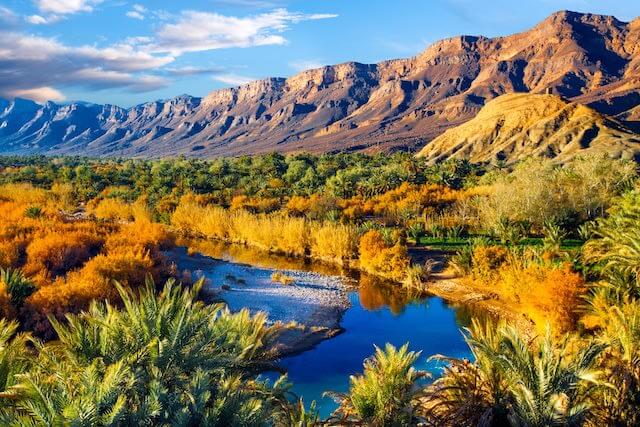Morocco is preparing a large-scale initiative to protect the fragile oases of the Drâa Basin, which are increasingly under threat from the worsening effects of climate change. The country is currently in talks to secure $10 million in funding from the Global Adaptation Fund to launch a comprehensive intervention program between 2026 and 2030. The effort is being led by the Agricultural Development Agency and aims to preserve not only the environment but also the cultural and economic life anchored in these desert ecosystems.
The main goal of the project is to build resilience—environmental, economic, and social—across the region’s oases, which are considered vital to Morocco’s natural and cultural heritage. The first phase of the program will focus on tangible, ground-level actions: repairing irrigation systems, combating sand encroachment, reducing fire risk, and maintaining palm groves. Alongside these practical efforts, early warning systems and public awareness campaigns will be introduced to support climate preparedness and long-term sustainability.
But this is more than just an environmental project—it also has a strong local development component. Training sessions will be offered in sustainable water management, organic farming practices, and product marketing, particularly for local agricultural goods. Special support will go to women, young people, artisans, and those working in tourism, with a clear focus on nurturing entrepreneurship. Overall, the program is expected to benefit over one million people, with women making up 40 percent of the target population and youth accounting for 20 percent.
This initiative comes at a critical time. Morocco is facing unprecedented climate stress, and scientists now classify the country as a high-risk zone. Since the 1960s, average temperatures have climbed sharply, while rainfall has become increasingly scarce and erratic. Water availability is in steep decline, with annual surface water volumes dropping from 22 billion to less than 18 billion cubic meters—a level that edges the country dangerously close to absolute water scarcity.
Spanning roughly 48,000 hectares, Morocco’s oases are mainly located in the regions of Drâa, Ziz, Tafilalet, Figuig, and the Dir of the Anti-Atlas. These areas are home to over 1.7 million people and play a significant role in the national agricultural sector. But they are extremely vulnerable. With intense heat swings, high evaporation rates, and a growing threat of both severe drought and sudden flooding, these ecosystems are under enormous pressure.
While large dams like Mansour Eddahbi and Hassan Addakhil have helped reduce flooding, they’ve also disrupted the natural recharge of underground aquifers. This has left communities caught in an increasingly precarious cycle—swinging between desperate hopes for rain and the looming fear of climate disasters. With this new program, Morocco is attempting to break that cycle and offer a path toward greater resilience and long-term survival for its oasis regions.
